Très Drey Noir
by SealWyf, HSM editor and fantasy detective
A dark night, and a foggy one. Ships were hooting on the Bay, sounding like loss and regret. I sat in my empty office nursing a glass of Scotch, reluctant to leave for my equally empty apartment. I had just poured a second glass when the downstairs door banged. Footsteps lurched and staggered in the hall. A body collided with my office door. It slid down, a dead weight, as the hand pressed against the frosted glass left behind a print of blood.
“Noir” is a term applied by critics and media historians to a certain style of books and films, popular in mostly in the US, and mostly in the 1940’s and 1950’s. The stories owed much to the hard-boiled school of American detective fiction, and the films owed a stylistic debt to German Expressionism, with its moody lighting and odd camera angles. It’s no coincidence that many Hollywood directors of the period had recently fled Hitler’s Germany.
The word noir — “black” in French — refers both to this visual style, and to the dark, cynical world these books and films portray — a world in which everyone has their price, protagonists are no more moral than their opponents, and love is a trap baited with sex and obsession. Urban settings are common, as are crime stories. But, whatever the setting, noir stories have a distinctive gritty realism and psychological complexity.
Some famous works of film noir of “the classic period” — the 1940’s and ’50’s — include “The Maltese Falcon”, “Double Indemnity”, “The Postman Always Rings Twice”, “Notorious”, “Key Largo” and “High Sierra”. Although visually moody black-and-white films are a thing of the past, the distinctive noir sensibility survives in many modern films, some of which are deliberate homages to the earlier works — famous examples include “Chinatown”, “Taxi Driver” and “Pulp Fiction”. The noir genre has been parodied in films such as Woody Allen’s “Play It Again, Sam” and Garrison Keillor’s radio skits featuring private eye Guy Noir.
He looked like a man who thought well of himself, and expected me to share his opinion. Wavy red-brown hair, flawless smile, a suit that said “no expense spared” without being actually flashy. He kept his double-take at my female gender to a minimum. I appreciated that.
“Seal. Interesting name,” he said. “Is it short for something?”
“Dad loved the sea. Mom was a hopeless romantic.” My standard answer, and close enough to the truth to pass for it with a client. “So your note said you’re looking for your… sister?”
“Half-sister,” he said a little too quickly. “Actually, Mae was adopted.” He handed me a creased Kodak of a woman wearing a sleek white bathing suit and wide-brimmed beach hat. She was a stunner, with long legs and formidable frontage. And she was definitely Chinese.
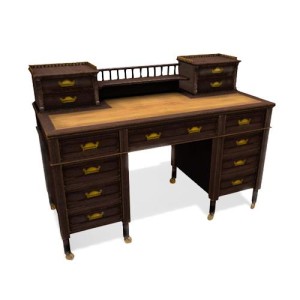 UK-based developer Lockwood has created many universes in their spaces and product lines. These include the post-apocalyptic future (Sodium), role-playing games (Mercia), adventure fiction (Fool Throttle), hard science ficion (Iron Fusion), and the world of the ultra-rich (Figment, and its associated “Dream” personal spaces.) The Drey line has, up to now, been exclusively about fashion. Drey clothing is well-made and stylish, and a bit pricey. It is very popular with the fashionista community in Home. A series of “props” under the Drey label — objects designed for fashion shoots — included the iconic Drey Prop Black Stallion.
UK-based developer Lockwood has created many universes in their spaces and product lines. These include the post-apocalyptic future (Sodium), role-playing games (Mercia), adventure fiction (Fool Throttle), hard science ficion (Iron Fusion), and the world of the ultra-rich (Figment, and its associated “Dream” personal spaces.) The Drey line has, up to now, been exclusively about fashion. Drey clothing is well-made and stylish, and a bit pricey. It is very popular with the fashionista community in Home. A series of “props” under the Drey label — objects designed for fashion shoots — included the iconic Drey Prop Black Stallion.
Lockwood now edges the Drey line into period fashion with the Drey Noir sub-line. At first it was only fashion — garments with a 1940’s look, with half-implied backstories, such as the femme fatale, the fox-hunting sportswoman, the rumpled detective and the reporter. The story element is expanding now, made explicit by Lockwood’s tag line for these items, “Live the Story.”
She had worn a bathing suit in the snapshot. Now she sported an evening gown, a pink-magenta number with a side-slit so deep you wondered if she was wearing underwear. Then she crossed her legs, and settled the question. “So Michael is looking for me,” she said, her tone implying she wasn’t all that pleased about it.
“He said you had a family heirloom,” I countered. “A statue of a dog.”
She reached into her handbag as if she was looking for her lipstick. But when her hand resurfaced, I was staring down the barrel of a tiny but effective-looking pearl-handled revolver.
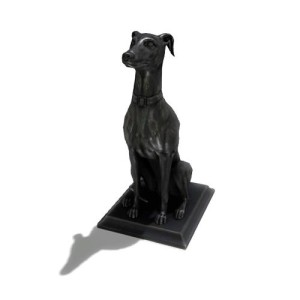 The new collection of Drey Noir furniture and decorations, introduced in Home this past week, will let you decorate the private space of your choice as a detective’s or reporter’s office of the 1930’s or 40’s. It’s a set of thirteen items, available individually or in a bundle for $5.99 — well worth the investment, in my opinion. The collection includes a desk and chair, two bookcases, a side table, a desk lamp, a coat rack, a clock (not a working one), a candlestick phone, a folded newspaper, a reporter’s notebook, a pair of wire-rimmed glasses, and a lovely statue of a dog.
The new collection of Drey Noir furniture and decorations, introduced in Home this past week, will let you decorate the private space of your choice as a detective’s or reporter’s office of the 1930’s or 40’s. It’s a set of thirteen items, available individually or in a bundle for $5.99 — well worth the investment, in my opinion. The collection includes a desk and chair, two bookcases, a side table, a desk lamp, a coat rack, a clock (not a working one), a candlestick phone, a folded newspaper, a reporter’s notebook, a pair of wire-rimmed glasses, and a lovely statue of a dog.
The last item, the Drey Noir Greyhound, is a lifesized figure whose pose, style and texture are an obvious reference to the falcon statue in The Maltese Falcon. What lies beneath the statue’s slick black surface? Like the other items in the collection, it’s beautifully designed and well-crafted. All of the items give the sense that “the detail goes all the way down.” The lamp has a nice solidity, the clock is uniquely elegant, and the newspaper and notebook can be used in many settings to add a bit of thematic texture.
Will the Drey Noir sub-line continue to expand? Lockwood, replying to a query on their Facebook page, said they have no plans for additional content. But of course plans can change. These items may never be best-sellers, but they will be useful in machinima or other story-telling media, such as graphic novels, or simply as props for imaginative interior decoration.
I staggered through the burning building, hugging the heavy bundle against me. Smoke blinded me, and the heat was overpowering. But I wasn’t going to drop the thing, after all I had been through. At least one person had already died because of this damn’ statue. I refused to be the second.
The fire trucks had arrived by the time I reached the sidewalk. I collapsed in the cool night air, gasping and coughing. Then I tore off the string and stripped the singed blankets away.
It wasn’t the dog statue after all. It was just a big, heavy, statue of a black bird. With a note tied to it scribbled in Chinese, which I strongly suspected said, “Bad guess, chump-face!”
 So where can we use these wonderful little items? If we are not building a set from scratch in the LOOT modular studio, we really don’t have anything suitable in the way of period personal spaces.
So where can we use these wonderful little items? If we are not building a set from scratch in the LOOT modular studio, we really don’t have anything suitable in the way of period personal spaces.
There are a few near-misses. The Uncharted space has been suggested for a classic adventure fiction feel, and I think that would work pretty well. The old Playground Apartment has a tacky inner-city look that could be cobbled into an office. The Rapture Metro Apartment has period ambiance, although it is underwater; however, it is so full of burned-in furniture it is difficult to furnish.
After considering my options, I ended up putting the Drey Noir collection in the back room of the London Pub, on the theory that my detective/reporter moonlights as a publican. Despite the weird premise, the items works pretty well there. The space has the proper foggy urban ambiance, with gritty details.
He lay beside me, one arm bent behind his head, staring at the ceiling. I wondered which of the standard lines he would use — regret that we had ended up in bed together, or conventional romantic gratitude.
“So, did you find the dog?” he asked.
I should not have been surprised. That damn statue was his sole obsession. “Not yet. I may know where to find it. But I need to know the truth. About Mae. About the murdered harbor pilot. About the fire in the warehouse. I’m pretty sure that was arson. Did you have anything to do with it, Michael?”
“You know me better than that.”
“Do I? Do I, really?” It wasn’t a fair question, of course. No human being ever really knows another.
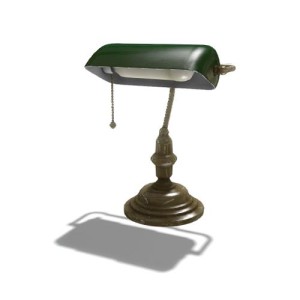 But what we really need a new private space, one designed to coordinate with the Drey Noir line, and perhaps allow it to expand. I’m hoping that Lockwood agrees. I think such a space would do well, especially if it were distributed though the Gift Machine. It’s often more fun to give something as a present than buy it for yourself. So, if Lockwood would like to consider a Private Eye’s Office apartment, here are my suggestions.
But what we really need a new private space, one designed to coordinate with the Drey Noir line, and perhaps allow it to expand. I’m hoping that Lockwood agrees. I think such a space would do well, especially if it were distributed though the Gift Machine. It’s often more fun to give something as a present than buy it for yourself. So, if Lockwood would like to consider a Private Eye’s Office apartment, here are my suggestions.
The space is located in San Francisco of the 1940’s. It’s night outside, with with plenty of fog. In fact, we can go outside and walk in the fog, stand under a street lamp at the corner, or peer into a dark alley. Leaving the sidewalk, we climb a short flight of stairs to a hall with a few closed office doors. Our office has a frosted glass pane on the door, and it would be great if we could customize the name painted on it.
Inside the door is a small receptionist’s area with a desk and coat rack, and a door to the inner office. The inner offer has windows that open on the fog-bound cityscape. The sounds of the city drift through. The walls have scratched wood paneling below cracked plaster. There is a tiny bathroom to one side, none too clean. The lighting is moody, and the colors are muted.
Some furniture could be burned in — a worn carpet, the receptionist’s desk and detectives’ desks, a cracked dark leather couch in the inner office. But if it’s a small space we might not need this. It would be great to have some background music — a radio with a forties soundtrack, possibly Big Band or jazz, like the radio in the Rapture space.
I personally hope that Lockwood continues their Drey Noir line. It’s a nice little universe, one that encourages us to play make-believe, make media, and indulge in a grown-up version of dressups.
But they have built nice little universes before, and never took them anywhere. Is this just another fleeting experiment? Or could other Drey sublines be in the works, mining other styles and time periods? I think that would be a lot of fun as well. We shall simply have to wait and see what they come up with.
The cab stood under the streetlamp, its meter ticking. Michael checked his watch again. “Come with me, Seal,” he pleaded. “You can buy a ticket at the airport. We’ll get married in Chicago.”
“No,” I told him. “That bird won’t fly. Sure, maybe we’d be happy for a week or two. But you want a house with a little fenced garden and a little woman in the kitchen. That’s not my style. It was fun while it lasted, but it’s over.”
He stepped into the cab. “I’ll write,” he called, as it pulled away.
I doubted it. He would forget me and move on. And, to be honest, that’s what I wanted. Life’s too short for complications, and the world’s way too wide for white picket fences.
The fog curled in as I walked back to my empty office. The Bay was hidden in darkness. But I heard the waves slapping against the pier. And, far beyond, the joyous barking of the seals.
Share
| Tweet |


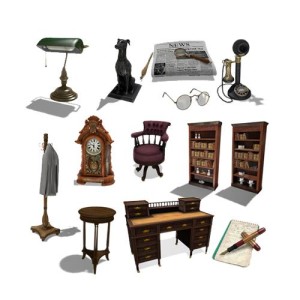
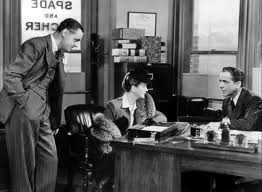
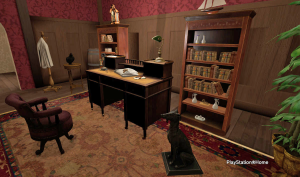
Love the little story you wove into this Seal. I bought the bookcases right away, I have been waiting for something like that for a long time in Home to decorate with. All of the ones we get are always empty or look weird, unless you want to buy the MIB space to get one. Great read.
Damn, that’s a good piece, Seal. Brava!
Fun read!
I’m looking for the right place for a 1940’s setting, also. Unfortunately, the Uncharted space is also quite heavily furnished already, with items like a bed, couch, bookcase, table, chairs and a desk. I managed to make a small bathing area and an even smaller kitchen area in mine. The patio is large and I keep my goat there.
I agree we need/want a 1940’s space or at least a neutral-era space where we can show off these items. I like your idea, but I’ll keep looking, too.